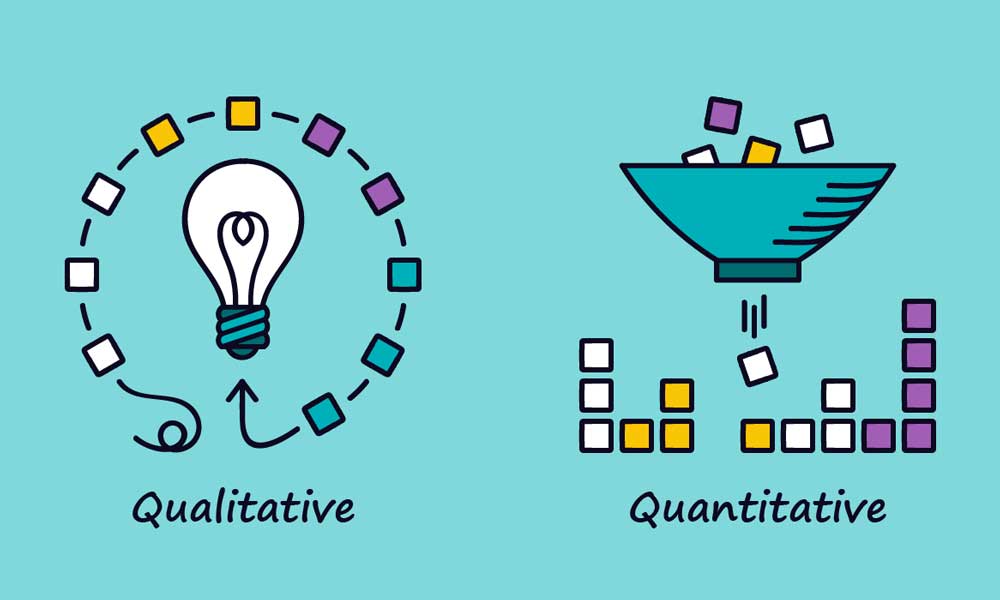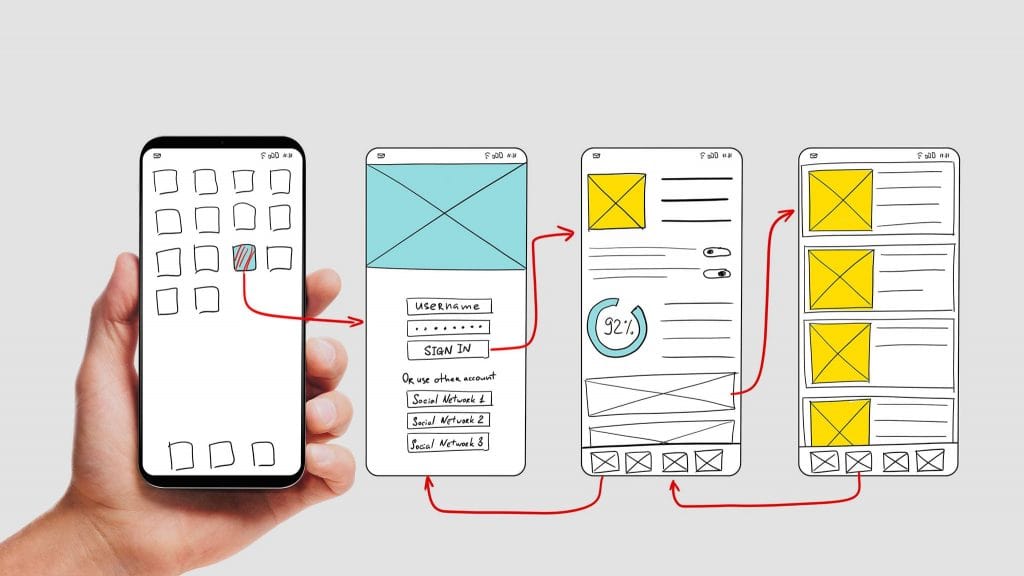User Experience Testing: How to Create Intuitive Interfaces
User experience (UX) testing has become a crucial design process.
With so many apps and websites competing for attention, UX testing helps ensure your product stands out for the right reasons.
This comprehensive guide will explore User Experience testing, why it’s essential, methodologies, best practices, and more to help elevate your UX.
- User Experience (UX) testing is essential for assessing product usability and enjoyment, identifying strengths and weaknesses.
- Continuous feedback and iterative testing lead to design validation, enhancing user satisfaction and driving engagement metrics.
- Utilise both quantitative and qualitative methodologies to gain comprehensive insights and make informed UX improvements.
What Exactly is UX Testing?

Put simply, UX testing evaluates how easy and enjoyable your product is for users. But let’s break it down further:
- User Experience (UX) encompasses all aspects of a user’s interaction with your product, including the interface, visual design, content, interactions, ease of use, satisfaction, and more.
- UX Testing – The practice of observing actual users interacting with your product to identify strengths, weaknesses, pain points and areas for optimisation.
- Goals – The goals are to see where users struggle, what delights or frustrates them, if the product is intuitive, and how it might be improved. Testing provides insight into the user perspective.
In a nutshell, UX testing lets you watch target users engage with your app/site to uncover opportunities to create a more intuitive, seamless experience.
Why Invest Time in UX Testing?
With so many demands on product teams, you may wonder why UX testing deserves attention. Here are four compelling reasons:
1. Identify User Pain Points
Your internal team is highly familiar with your product. You know how everything is supposed to work. Your users don’t! Based on the current design, UX testing highlights areas where users struggle to feel confused or frustrated.
2. Validate Design Direction
By getting your product into the hands of actual users early and often, you can validate that your design direction aligns with user needs and expectations. Early user feedback leads to quick pivots.
3. Prioritise Opportunities
When multiple issues crop up in UX testing, decide which ones to tackle first based on factors like frequency, severity and effort to address. This ensures you maximise impact.
4. Drives Digital Success Metrics
Optimising for an intuitive user experience leads to hard business results like increased conversion rates, lower bounce rates, higher revenue, better retention, and positive App Store ratings.
Importance of Continuous Feedback in UX
Continuous feedback mechanisms, such as user surveys and in-app feedback forms, help maintain a user-centred approach. They allow designers to identify issues early, ensuring alignment with user needs.
Frequent engagement with users through these channels can uncover emerging trends in usage behaviours. This can direct design iterations that enhance product satisfaction continuously.
Continuous feedback loops are integral to improving user experience. They should be established through various channels. Regularly scheduled feedback sessions enable designers to respond quickly to user concerns. This helps streamline the process of identifying patterns.
In-app feedback and user interviews allow insights directly from users. These interactions enhance understanding of what truly influences user satisfaction. Combining methods ensures a well-rounded perspective, offering both quantifiable data and qualitative insights.
UX Research: Quantitative vs. Qualitative Testing

You’ll choose between quantitative and qualitative methods when designing a UX testing plan. They each serve different purposes.
Integrating UX Testing in Agile Development
UX testing can be naturally incorporated within agile development cycles, promoting constant iteration. Conducting tests as part of each sprint provides timely insights that aid in refining user interface features.
Regular testing within agile frameworks fosters a culture of adaptation. This assures that the development processes remain closely aligned with changing user needs and expectations.
Agile methodologies benefit significantly from integrating UX testing at each stage. By embedding UX tests in each sprint, teams can produce iterations aligned with user expectations. This involves revisiting user stories and personas regularly.
Frequent testing ensures features released are user-friendly, maintaining product relevance and usability. This proactive approach reduces the risk of expensive redesigns later. Aligning testing with agile principles fosters flexible adjustments as feedback is iteratively incorporated into the development process.
Quantitative Testing
Quantitative tests emphasise numerical data like task success rates. They focus on what proportion of users can complete critical tasks quickly. Examples include:
- First-click tests – Where do users first click to attempt completing a task? This reveals if the path is intuitive.
- Five-second tests – What impressions do users form just five seconds after viewing a design?
- Preference tests – Which of two or more proposed designs do users prefer and why?
- Benchmark tests – How do task success rates for your design compare to benchmarks and past versions?
Qualitative Testing
While quantitative testing emphasises statistics, qualitative testing uncovers deeper insights through open-ended feedback. Examples include:
- Moderated tests – Sessions where users share thoughts aloud as they engage with your product while a researcher guides them with questions and observations.
- Unmoderated tests – You provide instructions and let users self-navigate through your product while recording their expressions, clicks, keyboard activity, etc.
- Interviews/focus groups – Directly ask 5-10 users questions on what they like, dislike, would change, etc., about the product experience.
- Surveys – Gather open-ended written feedback from users at scale via online surveys.
The data vs. stories dichotomy shows how quantitative and qualitative testing dynamically inform great UX. Pair them with powerful insights!
Usability Testing on Mobile Devices
When conducting usability tests on mobile devices, special attention should be given to touch interactions.
Focus on gestures such as swipes, taps, and pinches, as these are fundamental perceptions of usability. Testing with various screen sizes also ensures accessibility across different devices.
Consider constraints like battery usage or mobile data consumption, as these affect user experience significantly. Designing under realistic conditions better reflects actual user challenges.
Mobile usability testing presents specific challenges, but these offer opportunities for creative solutions. Testing should explore battery efficiency and data usage concerns, reflecting real-world mobile usage limitations.
Engagement with touch interfaces requires examining response times and gesture recognition. Considering these factors during tests ensures designs are intuitive.
Testing across a range of network conditions guarantees app resilience in varied environments. Addressing these areas enhances the overall mobile user experience.
6 Key UX Testing Methodologies Compared
Many methodology options exist when testing UX. Which one(s) should you use? Here’s an at-a-glance overview:
| Method | What is it? | Pros | Cons | When to Use |
| Usability Testing | Observe representative users trying to complete critical tasks using your product via in-person sessions, recordings, etc. | Direct feedback on improvements, quantifiable task success rates | Small sample sizes, navigating participant scheduling | Early design concept validations |
| A/B Testing | Facilitated discussion with 6-10 users on the UX topic | Easy to set up, large sample sizes, data-driven | Only for minor variations on the same page, no user feedback | Optimising conversion performance |
| First Click Tests | Analyse the links/buttons people first click when attempting a task | A quick insight into most instinctual interaction paths | There is no feedback on why; small samples can skew data | Provides indirect data, typically with low response rates, and potential sampling bias |
| Surveys | Ask 5+ questions to a sample audience to uncover feelings, preferences, etc., related to UX | Broad feedback, easy distribution via email or embedded in the product | Validating if a clear first action exists | General sentiment pulse checks |
| Focus Groups | Facilitated discussion with 6-10 users on UX topic | Rich qualitative data based on group dynamics | It is hard to facilitate small samples, schedule multi-person sessions | When seeking wide-ranging direct user perspectives |
| Interviews | One-on-one direct UX feedback sessions | Dive deep into individual user mindsets | Time-intensive, small samples | Understand personal contexts influencing behaviours |
There’s no one “right” methodology – integrate multiple approaches to gather complementary insights that inform design decisions. Now let’s explore best practices to extract maximum value from UX testing of all varieties…
10 Tips for Conducting Effective User Experience Testing Sessions

UX testing yields valuable insights if testing sessions are carefully planned and facilitated effectively. Here are ten tips:
Kick Things Off Clearly
- Welcome users, state your name/role, provide an overview of session goals, and explain that you are testing the product (not them!). This frames things positively.
Make Sure Users Can Speak Freely
- Users shouldn’t hold back on honest feedback, so encourage sharing criticisms by ensuring anonymity and reminding them there are no right or wrong answers.
Define Tasks Succinctly
- Use natural language to define tasks simply, e.g. “Find pricing information as if you were considering purchasing.”
Get Insight On First Impressions
- Ask users to initially explore and then describe what they notice rather than asking them to attempt specific tasks right away. Their instinctual use provides critical data.
Have Users Think Aloud
- Get blow-by-blow perspectives by asking users to vocalise reactions, choices, confusion, etc., as they interact rather than stay silent.
Only Help When Necessary
- It’s better to see if users struggle than to guide them; only assist if progress completely halts—document where and why help was needed.
Use Actual Platforms
- Are you testing mobile sites? Use actual phones and tablets. Fidelity to real-world conditions provides the most accurate data on challenges.
Have Dedicated Note-Takers
- Assign colleagues to take careful notes during tests focused on emotional reactions, points of confusion, etc. Free you up to engage fully.
Show Appreciation
- Sincerely thank users for their participation and feedback after completing the session tasks. Send follow-up appreciation if appropriate.
Debrief Right After Each Session
- While sessions are fresh in your mind, review notes, debrief with observers, and discuss key learnings. This speeds meaningful analysis.
By mastering UX testing facilitation essentials, your test sessions will yield optimal insights to elevate user experiences. Now, let’s explore analysis tactics to help prioritise discoveries…
Analysing Testing Results: Uncovering UX Optimisation Opportunities

The proper analysis approach transforms observed user interactions into actionable opportunities to reduce friction and solve problems. Follow three key steps:
1. Review Session Notes & Recordings
Carefully comb through tester comments, facilitator notes, screen recordings, etc., to relive key moments of struggle, confusion, delight, etc. Look for trends and outliers.
2. Identify Optimisation Opportunities
Compile a list of issues uncovered with counts based on frequency. Then, map to specific screens/interactions. Also, indicate the severity for each based on the intensity of confusion/frustration.
3. Prioritise Opportunities
Now, determine the priority order to tackle the UX issues uncovered. Use frequency, severity, engineering effort, etc., to inform priorities. Assign action items to owners.
Sample Results Analysis Framework
| UX Issue | Frequency | Severity | Screen/Interaction | Priority | Owner | Resolution Notes |
| Unclear checkout button | 12 | High | cart/checkout call to action | 1 | John | Make button text more descriptive, e.g. “Proceed to Checkout.” |
| Confused by date selector | 5 | Medium | event form/date field | 2 | Sarah | Switch selector type, add label clarifying format |
Transforming observations into well-documented opportunities makes optimisation execution more methodical. This template can help streamline analysis.
Common UX Testing Tools
A number of tools can support effective UX testing processes. Maze and UserTesting offer comprehensive platforms to capture and analyse user feedback efficiently.
These tools provide user-friendly interfaces and help compile detailed reports. Hotjar assists in visualising user interactions, offering heatmaps and session recordings that reveal user focus and activity areas.
Selecting the right tools depends on specific project needs and resource availability.
7 Effective Design Iteration Tips Based On Feedback
Armed with priority UX issues uncovered from testing, it’s time to evolve the design. Follow these tips:
1. Form Design Hypotheses
Draft 2-3 potential solutions for each significant issue framed as testable hypotheses, e.g. “Making checkout button text more descriptive will increase click-through rate.”
2. Create Variations
Mock up the proposed design changes that reflect hypothesis solutions, like tweaking labels, adding tooltips, etc.
3. Test Iterations
Run simplified tests with 5-8 users per variation, focusing on the particular iteration to evaluate if it resolves the original confusion.
4. Declare Winners
Analyse task success rates, feedback, etc., to declare winning variations that best resolve targeted UX issues uncovered previously.
5. Expand On Iterations
Combine winning variants with additional tweaks based on richer notes from the latest sessions. Test again if necessary.
6. Roll Out Incrementally
Release UX changes incrementally via percentage rollouts. Monitor success metrics before pushing new versions to all users.
7. Rinse & Repeat
View UX optimisation as an ongoing process. Continually run new tests to find areas for improvement as new features roll out.
Avoid dramatic redesigns and gradually enhance experiences based directly on user feedback. Testing often prevents significant missteps!
Utilising AI in UX Testing
Artificial Intelligence is increasingly utilised in UX testing to automate and enhance analysis processes. AI can swiftly process large volumes of user interaction data, identifying patterns that might elude human reviewers.
These insights are essential for proactive rather than reactive design changes. AI tools also enable personalised user experiences by predicting user behaviour and preferences.
However, maintaining a balance between automation and human insight ensures that the emotional aspects of user interactions are not overlooked.
UX Health Check: 5 Signals You Need More Testing
How can you diagnose when an app or site UX needs attention? Watch for these five red flags:
- 😟 High Bounce Rates – People leaving immediately means failing to engage users quickly.
- 😫 Declining Reviews – Ratings/reviews mentioning usability issues indicate growing problems.
- 📉 Dropping Conversion Rates – Lower sign-up, purchase or subscriber rates suggest UX friction.
- 🤔 Support Tickets – Spikes in questions around aspects like checkout signal confusion.
- 🔎 Lacking Innovation – No significant UX changes while competitors improve means falling behind.
Catch these signals early as they prompt you to invest in UX testing and research to realign with user needs before issues compound and metrics nosedive further!
Testing UX? Focus On These 5 Website Elements
Conducting broader website UX testing? Be sure to evaluate these five key components:
- Homepage – First impressions matter! Evaluate if messaging/value prop resonates quickly.
- Calls-to-Action (CTAs) – Do buttons use action verbs that indicate the next steps?
- Forms/Data Entry – Simplify filling out forms that users often abandon if confusing.
- Navigation/Menu – Can users quickly move between pages and find what they need?
- Photos/Graphics – Is visual styling on-brand, cohesive and optimised for speed?
Scrutinising how these core elements impact the journey can uncover quick wins to streamline experiences.
When To Bring In External UX Testing Services

While much testing can be managed internally, outside experts like TryMata periodically provide invaluable 3rd party perspectives. Consider if:
- More Objective Feedback Needed – Internal biases influence testing, whereas outsider viewpoints are more neutral.
- Specific Expertise Required – For areas like accessibility, leverage specialists to surface deeper issues.
- Bandwidth Lacking – No time for rigorous in-house testing makes outsourcing a pragmatic solution.
- Second Opinion Desired – External confirmation that internal testing covered all the suitable bases is helpful.
Regardless of general testing practices, periodic external support tackles blindspots!
Key Takeaways & Next Steps
And there you have it – a comprehensive guide to elevating experiences via UX testing techniques! To recap critical points:
- Test early test, often to validate designs against user expectations.
- Balance quantitative data with qualitative insights to know what’s failing and why.
- Carefully facilitate sessions, analyse results, and iterate on feedback for continuous optimisation.
- Make UX testing central to product development – the ROI in engagement and conversions is immense!
As the following steps, audit your product experiences against the red flags shared earlier to diagnose if more testing is warranted. Establish testing goals and use the methodologies overview to pick one or two techniques to pilot first. Leverage the tips in this guide to maximise what you’ll learn. Soon, you’ll be on your way to UX excellence!
Frequently Asked Questions
Do you still have questions about maximising UX testing? Here are answers to 5 common queries:
What tasks should we focus on testing?
Prioritise testing critical conversion tasks and top user journeys where the drop-off is highest today, based on analytics.
How many test users are needed per round?
Five users often uncover 80-85% of issues. Test additional users if you need more quantitative data points.
Should we only do remote and unmoderated testing?
While helpful, mix in moderated live sessions to ask follow-up questions in real time for richer insights.
How often should testing happen – once a year?
As you add new features, you will maximise impact testing far more frequently, ideally monthly or at least quarterly.

